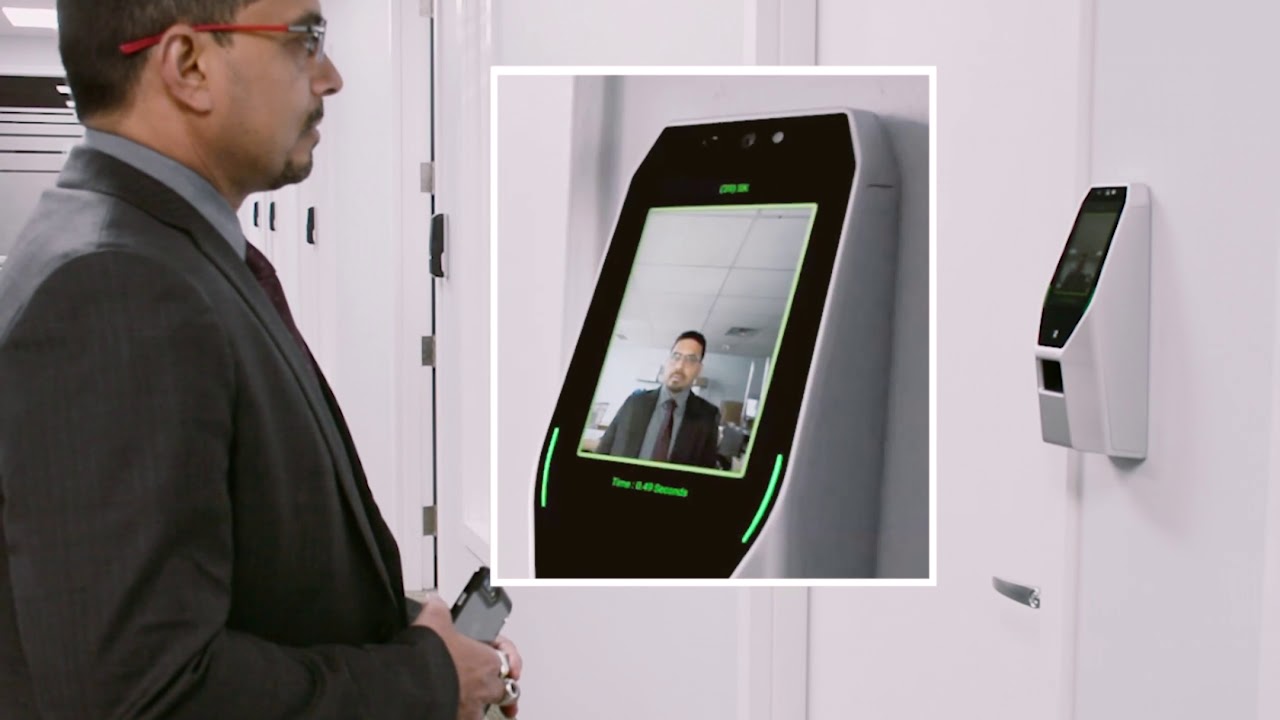A face analyzer is a piece of software that can identify a person or verify their identification based on their facial features. It does this by analyzing a picture of a face and recognizing and quantifying different facial traits. The process of facial recognition allows for the identification of human faces in photographs or videos, the determination of whether or not a face seen in two different photographs belongs to the same person, and the search for a face among a big collection of already existing photographs.
facial recognition for door access is one of the most common types of biometric data collected by security systems and may be used to uniquely identify persons throughout the onboarding or logging in process, as well as to improve authentication activities. Face recognition technology is also extensively used in mobile and personal devices for the sake of device security.

What are the advantages of using technology that can recognize faces?
The following is a list of some advantages that facial recognition systems have:
Effective and efficient security
A verification method that relies on facial recognition is both fast and effective. In comparison to other forms of biometric identification, such as fingerprint or retinal scans, this method is far quicker and more convenient. In comparison to typing in passwords or PINs, face recognition requires a far lower number of touchpoints. It is compatible with multifactor authentication, which provides an extra layer of security verification.
Accuracy that is much improved
Using just a person’s phone number, email address, postal address, or IP address to identify someone isn’t as reliable as using only their face instead. Facial recognition is more accurate. As an example, the vast majority of exchange services, ranging from equities to cryptocurrencies, now depend on face recognition to secure their clients and the assets they hold.
What kinds of situations call for the employment of face recognition systems?
The following are some applications that facial recognition systems find useful in everyday life:
Fraud detection
Face recognition is used by businesses in order to generate a one-of-a-kind identifier for customers who sign up for new accounts on internet platforms. After this is finished, face recognition may be used to check the identification of the person who is really using the account in the event that there is dangerous or suspicious behavior on the account.
Protection of digital information
Instead of using passwords, businesses are increasingly turning to face recognition technologies to bolster their cybersecurity. Because there is nothing that can be modified about a person’s appearance, it is difficult to get illegal access to facial recognition systems. The use of face recognition software for the purpose of unlocking cellphones and other personal gadgets is not only handy but also very accurate as a security mechanism.
Control at the airport and the border
Many airports now accept biometric data in place of passports, making it possible for passengers to bypass lengthy lineups and go directly through an automated terminal on their way to their gate. Wait times may be cut down significantly and enhanced safety can be achieved with the use of face recognition technology in the form of electronic passports.

